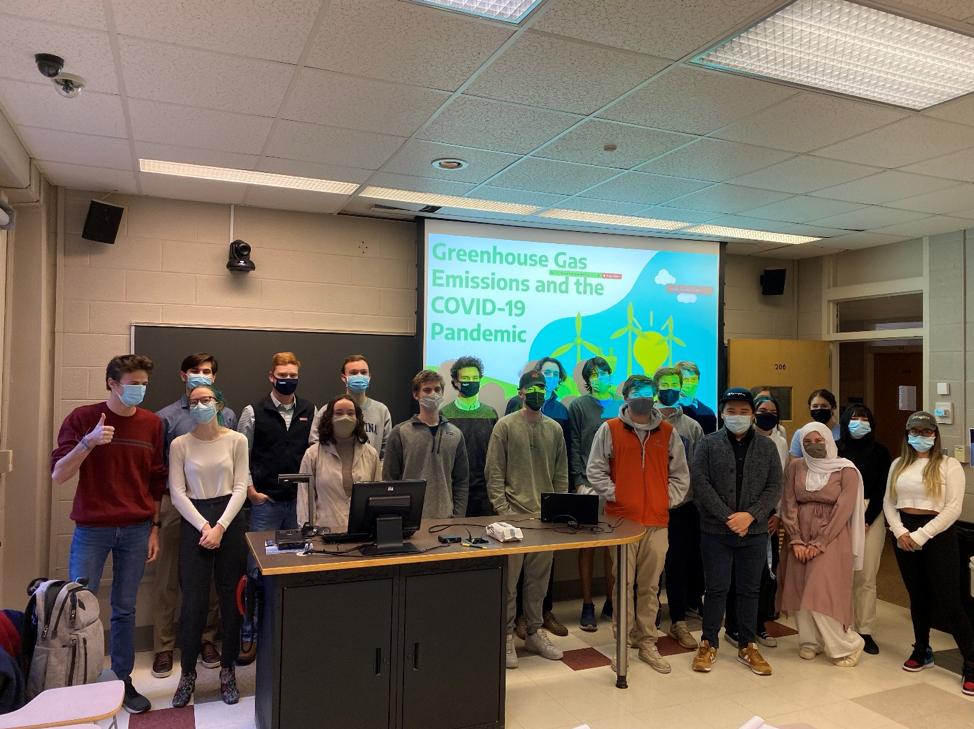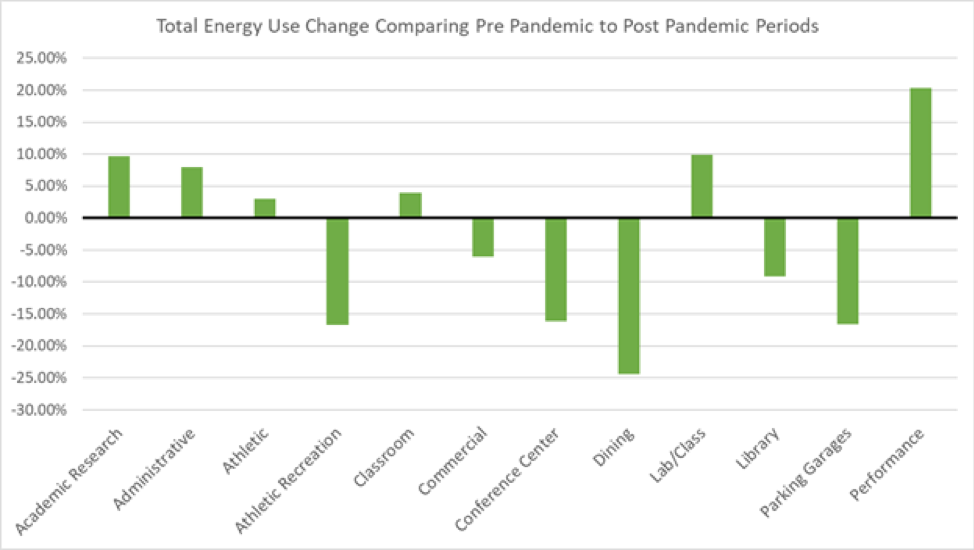By Melanie Elliott
Melanie Elliott is a recent graduate of UNC-Chapel Hill. Her academic focus was the physics of renewable energy systems, and her research involved a case study on the use of energy storage for the electrical grid in North Carolina. She now works as the sustainability analyst for Sustainable Carolina where her professional focus is data analysis for sustainable systems on campus.
Tracking Emissions
One of my responsibilities in my position with the Institute for the Environment is completing the annual Greenhouse Gas (GHG) Inventory to track Carolina’s progress toward carbon neutrality. The university has set a 2040 goal for carbon neutrality and in 2021 established a new Climate Action Plan.
Consistent with that plan the university has implemented several operational changes to reduce emissions. We have seen a steady decrease in emissions as a result of these changes even though campus population tends to increase annually, but the 21% drop between 2019 and 2020 was in part due to the pandemic.
I wanted to know how much of the reduction was directly caused by university efforts to lower emissions and how much was impacted by the pandemic meaning that we should anticipate a rebound as we attempt to restore normalcy. During the Fall 2021 semester, my coworker at Sustainable Carolina, Vik Agabekov, and I worked with Dr. Leda Van Doren to guide a capstone course through examining how the pandemic impacted our GHG Inventory.
Dr. Van Doren decided to break the class into five groups: Residential Buildings, Campus Buildings, Indirect Emissions, Costs and Equity, and Social and Individual Impacts. The first three groups were tasked with determining the quantitative impact the pandemic had on the inventory. These results could be used to suggest changes to university policy. For example, commuting emissions were down because campus users worked from home most of the year, so it may be reasonable to increase online course work for students. However, the social and financial costs of working from home are important to consider. Therefore, the other two groups were tasked with assessing the impacts of pandemic procedures on individual success and wellness.
Evaluating the Data
The students found interesting results. The emissions from campus buildings include emissions from combustion for electricity and combustion for steam which is used for heating. These emissions were largely consistent across 2019 and 2020 for many reasons. First, the building temperatures must remain between 58°F and 83°F in order to prevent building damage (e.g., mold growth). Second, while dining halls and gyms were essentially vacant in 2020, many campus buildings (e.g., lab buildings) remained fully operational. Third, the hospital’s energy use increased in 2020 compared to 2019, and occupied buildings experienced increased air flow to help remove pathogens in the rooms. These increases in energy use offset a large portion of the decreases achieved elsewhere.
Indirect emissions include all emissions over which the university maintains limited control. Air travel and commuting were the two primary categories contributing to overall emissions reductions in 2020. This group relied upon a student survey which asked questions about preference in virtual classes and study abroad. Unsurprisingly, students showed little interest in remote study abroad programs. However, students appear to be open to the idea of having one or two courses each semester be online or hybrid. The problem with claiming that this measure will help reduce emissions is that having only one class online will likely not affect a student’s commute if the student still makes the trip to campus five days per week to attend other classes.
More likely to reduce commuting emissions is allowing employees to work from home when possible. This strategy has layered complexity, though, when you consider the work of the Costs/Equity and Social Impacts groups. A portion of the employee’s at-home utility bills (and at-home emissions) will increase if they are using more heat and electricity than they would if working from campus, and the employee’s well-being may be negatively affected if increased isolation and/or increased financial burdens occur. Currently, there isn’t a methodology for accounting for additional at-home emissions as part of the University’s inventory.
I know that the students in the capstone gained a lot of knowledge and experience around greenhouse gas inventories, but I assume that their main takeaway was the same as mine: reducing emissions is complex and requires adjustments in our mindsets, but the pandemic has shown us that we are more than capable of adapting.




